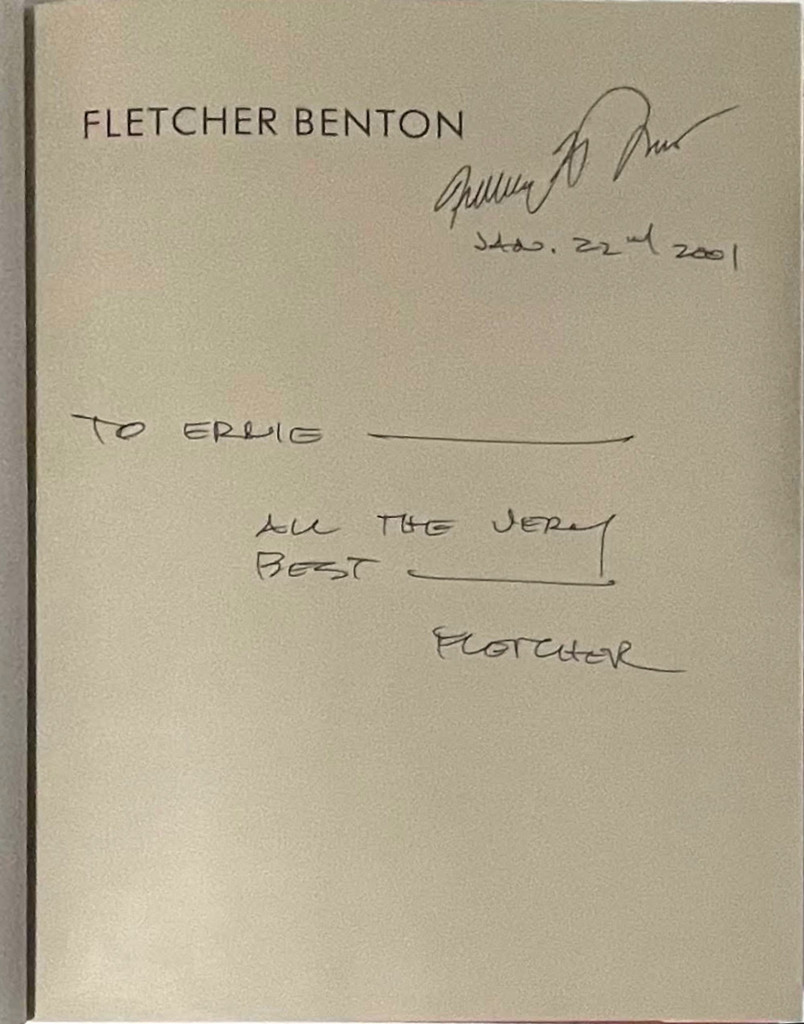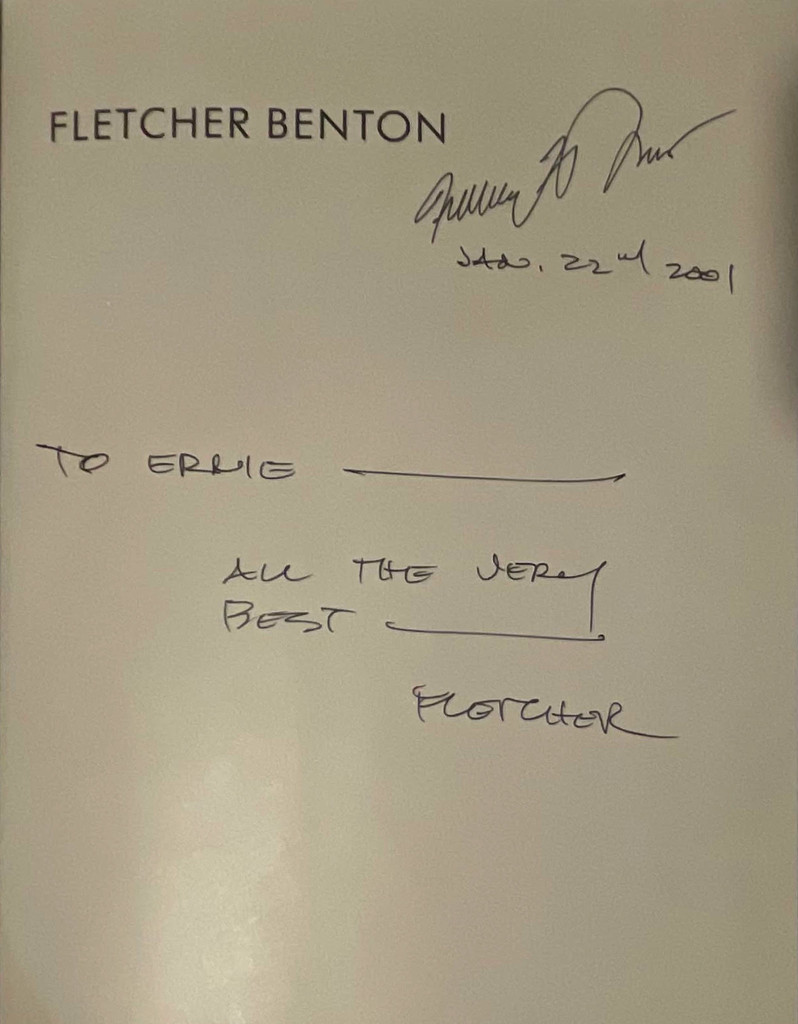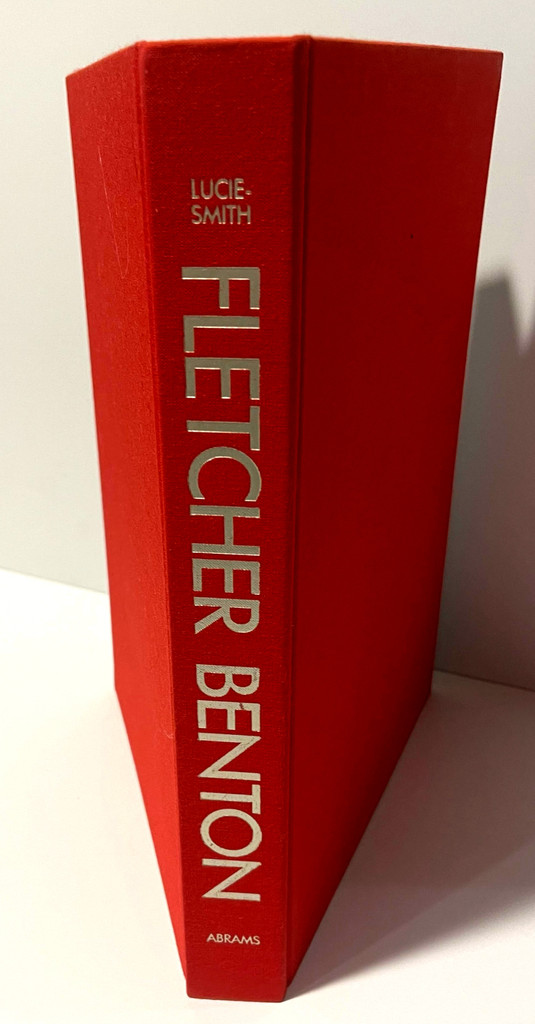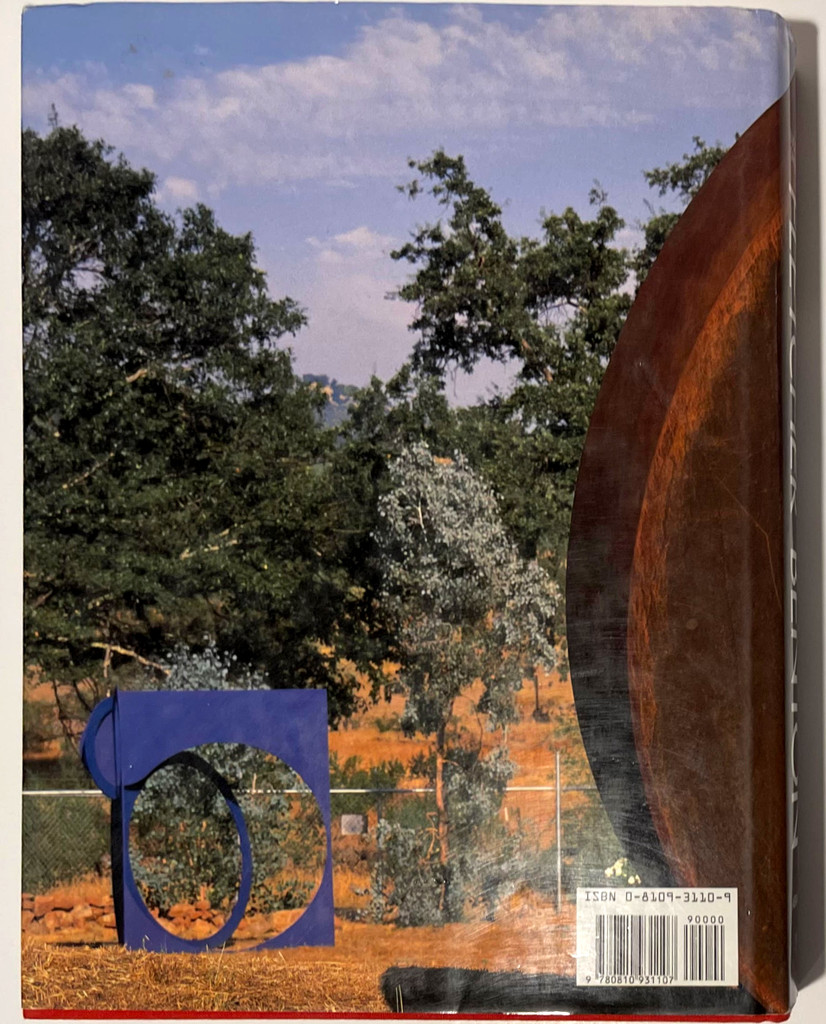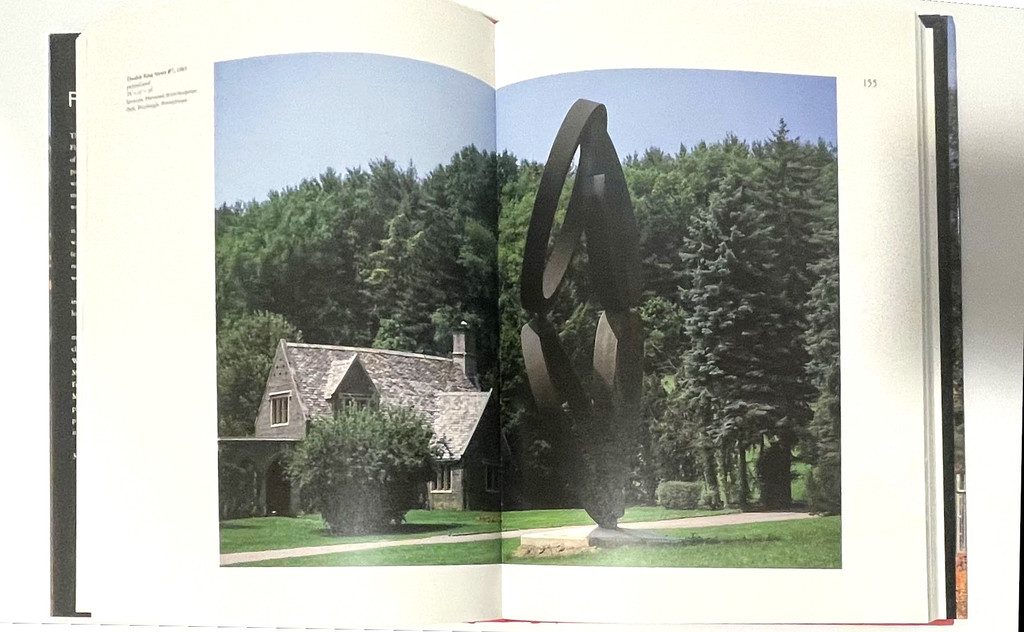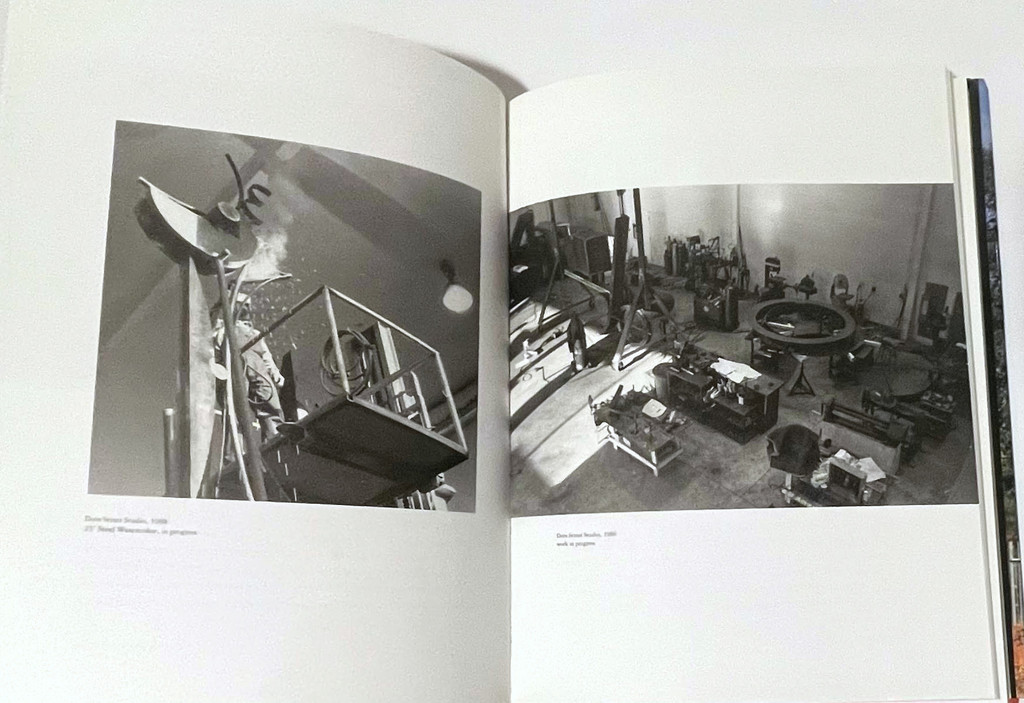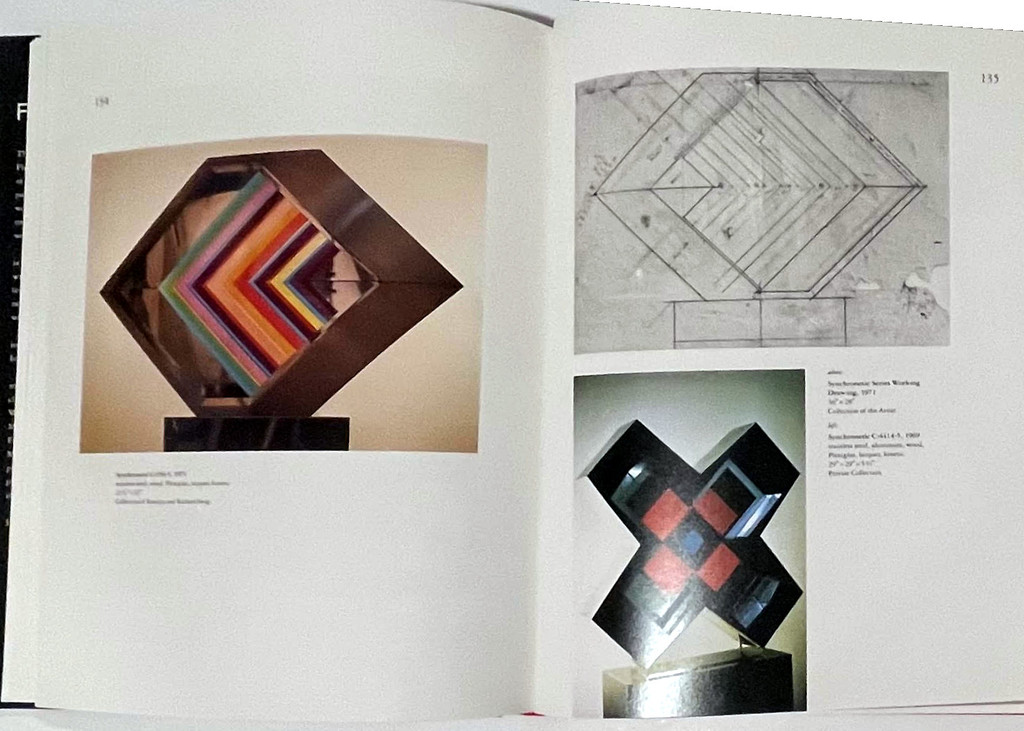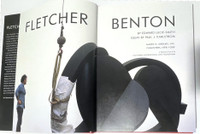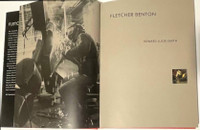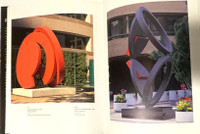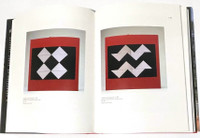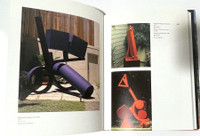
An Educated Collector is Our Best Client
In business for nearly two decades, we are a well established, popular contemporary art boutique specializing in expertly chosen, blue chip prints, multiples, uniques, books, ephemera and merchandise at different price points, with a focus on the secondary market. Please click on the "Contact Us" button at the bottom of this page for questions about any work, pricing and/or to arrange to visit our showroom/gallery - located in between Manhattan's Flatiron and Chelsea Flower Districts.
Fletcher Benton, Large hardback monograph (hand signed twice by Fletcher Benton), 1990
CONTACT GALLERY FOR PRICE
Description
Fletcher Benton
Large hardback monograph (hand signed twice by Fletcher Benton), 1990
Hardback monograph with cloth boards and dust jacket (hand signed twice and inscribed to Ernie)
hand signed twice, dated and inscribed in graphite by Fletcher Benton
12 1/4 × 9 7/20 × 1 3/4 inches
Unframed
This lavishly illustrated, substantial hardback monograph is hand signed twice, dated and inscribed by Fletcher Benton
Inscription reads
To Ernie
All the very best,
Fletcher
and then it is signed again "Fletcher Benton" and dated January 22, 2001
Book information:
Publisher: Harry N Abrams Inc (January 1, 1990)
English; Hardcover; 358 pages with 365 illustrations including 260 plates in full color.
Editorial Reviews:
From Publishers Weekly
Sculptor Benton has been compared to David Smith and Max Bill though he "invents" his geometric shapes from single units, unlike Smith, and relies mainly on emotion and intuition, unlike the mathematical Bill. Lucie-Smith ( The New British Painting ) begins with a condensed history of 20th-century American sculpture, an effort to establish references for Benton's work that seems superfluous; this is followed by more pertinent details of Benton's life in the San Francisco Bay Area and of the artist's progress through painting, kinetic art and abstract constructions. Karlstrom, West Coast art researcher for the Smithsonian, offers an eloquent psychological portrait of Benton that critiques his art as a whole; 365 photos, 260 of them in color, chronologically illustrate the artist's development. This informative and visually entertaining retrospective honors Benton's inventiveness, his well-earned success and his dynamic pieces.
About Fletcher Benton:
Born in Jackson, Ohio, in 1931, Fletcher Benton showed an early talent for art. From early childhood, Benton’s mother allowed him to use the family’s basement as an art studio and enrolled him in a local painting course. Benton also undertook an apprenticeship with a sign painter, after which he opened his own sign painting business at the age of fourteen. Though he would later explore different avenues of artistic expression, lettering and sign painting remained a near-constant presence in his artistic practice for the rest of his life.
Following a brief stint in the US Navy, Benton enrolled at Miami University in Oxford, Ohio, with the intent of pursuing its pre-med program. His interests quickly returned to painting, however, and he completed his degree in fine art in 1956. After graduating Benton relocated to San Francisco, California, where he immersed himself in the city’s vibrant artistic community.
In 1961, at the California Palace of the Legion of Honor, Benton had his first major solo show, a measure of his rising status as an artist. In 1964, however, a promised show at Gump’s Gallery was abruptly cancelled. This rejection sparked a radical transformation in the artist’s practice, and he began exploring Hard-Edge abstraction with a constructivist bent. Drawing on his knowledge of lettering, Benton debuted a series of kinetic works in a solo show in Los Angeles the next year. The kinetic and abstract elements of his new work led to increased interest from audiences, curators, and critics, and between 1965 and 1967 he participated in numerous high-profile exhibitions nationwide.
While he continued to exhibit, in 1967 Benton began teaching at California State University, San Jose, where he taught until retiring in 1986. In 2003 he received his first of many major public commissions: Steel Watercolor TriangleRing, a 66- foot-high red-painted steel sculpture installed at the Barbarossaplatz interchange train station in Cologne, Germany. Benton continued his work up until his death in 2019 at the age of eighty-eight.
Benton’s contributions to kinetic art and sculpture were recognized in his lifetime through numerous awards, honors, and public commissions. His works are also included in the collections of such prestigious institutions as the Metropolitan Museum of Art, New York; the Whitney Museum of American Art, New York; the Los Angeles County Museum of Art; and the Hirshhorn Museum and Sculpture Garden, Washington, DC, among others.
Courtesy of Yares Art


